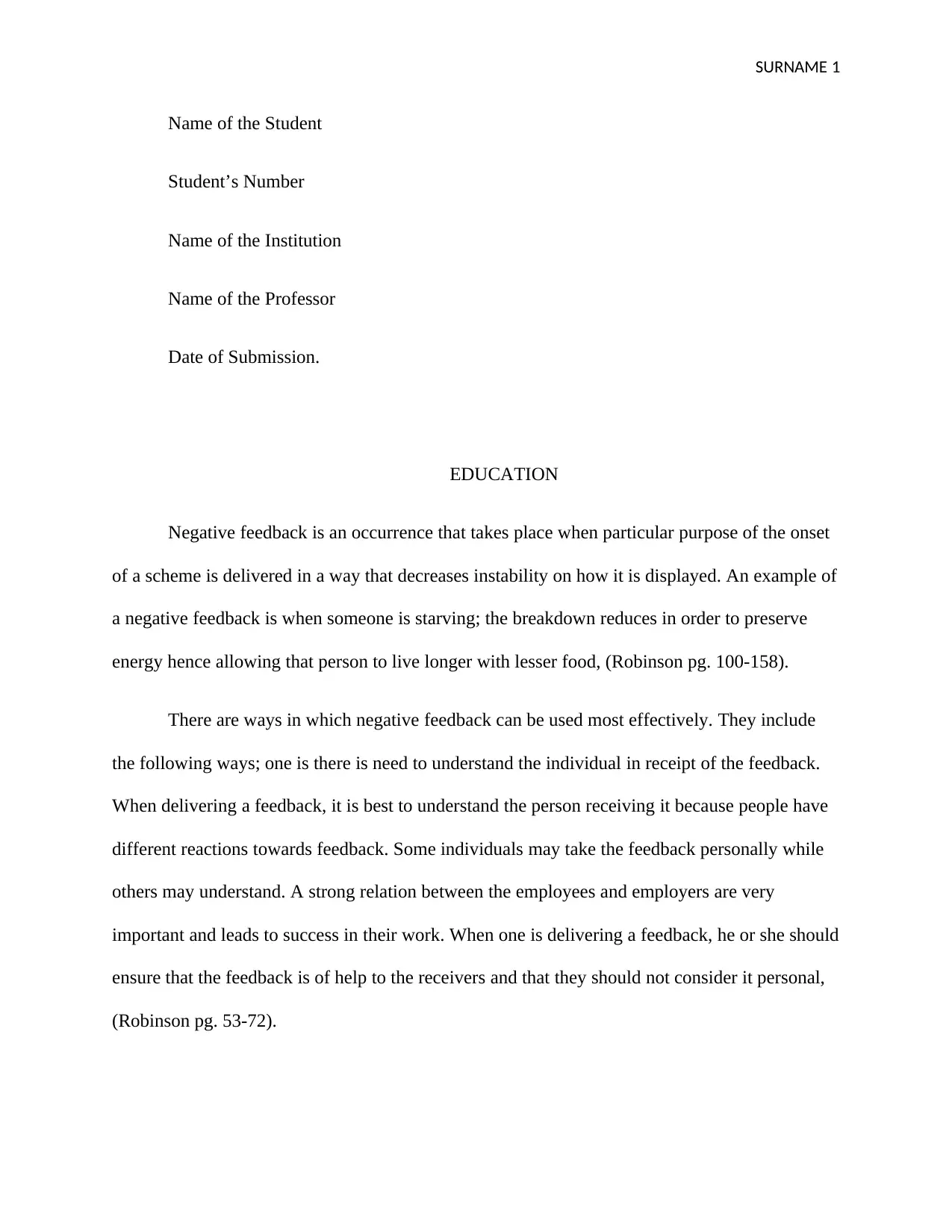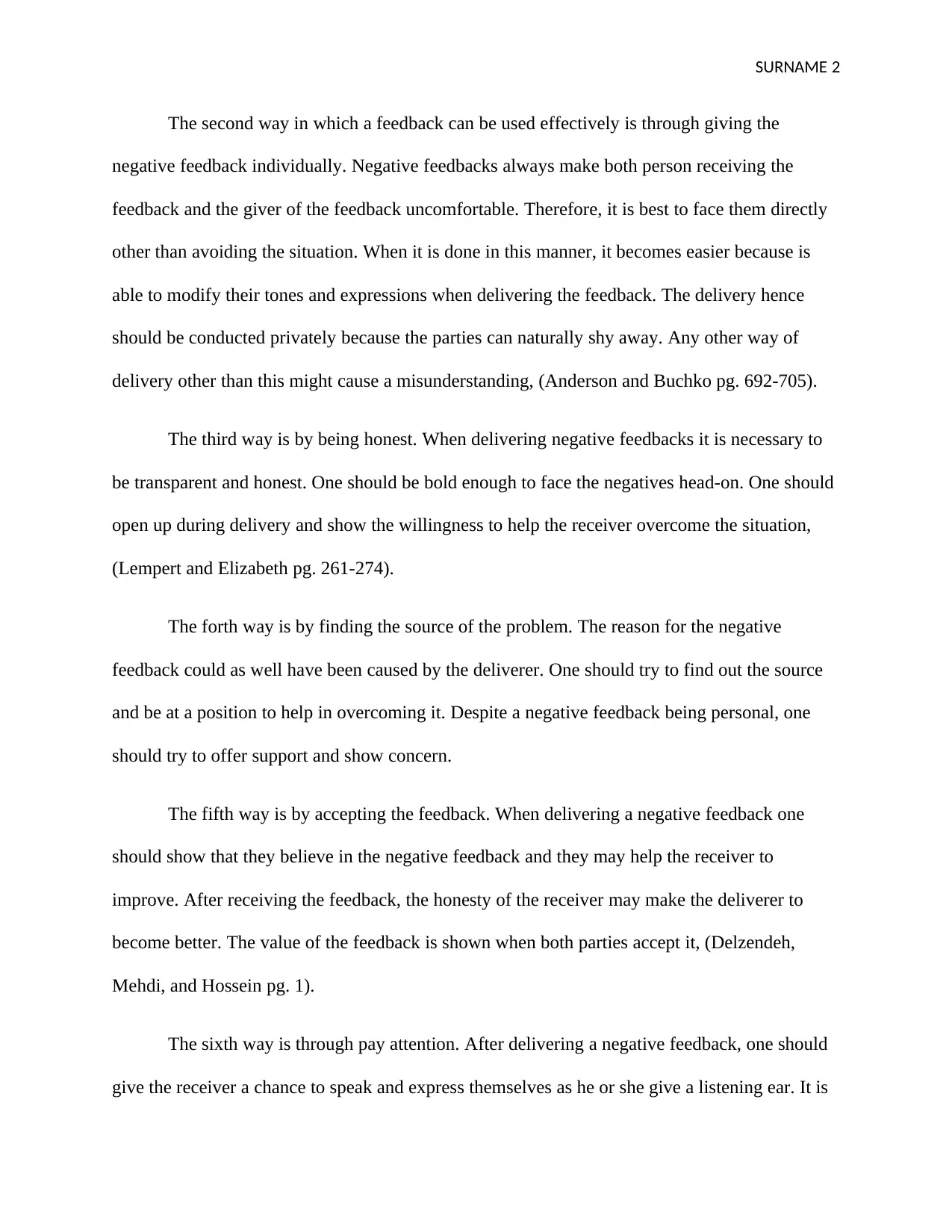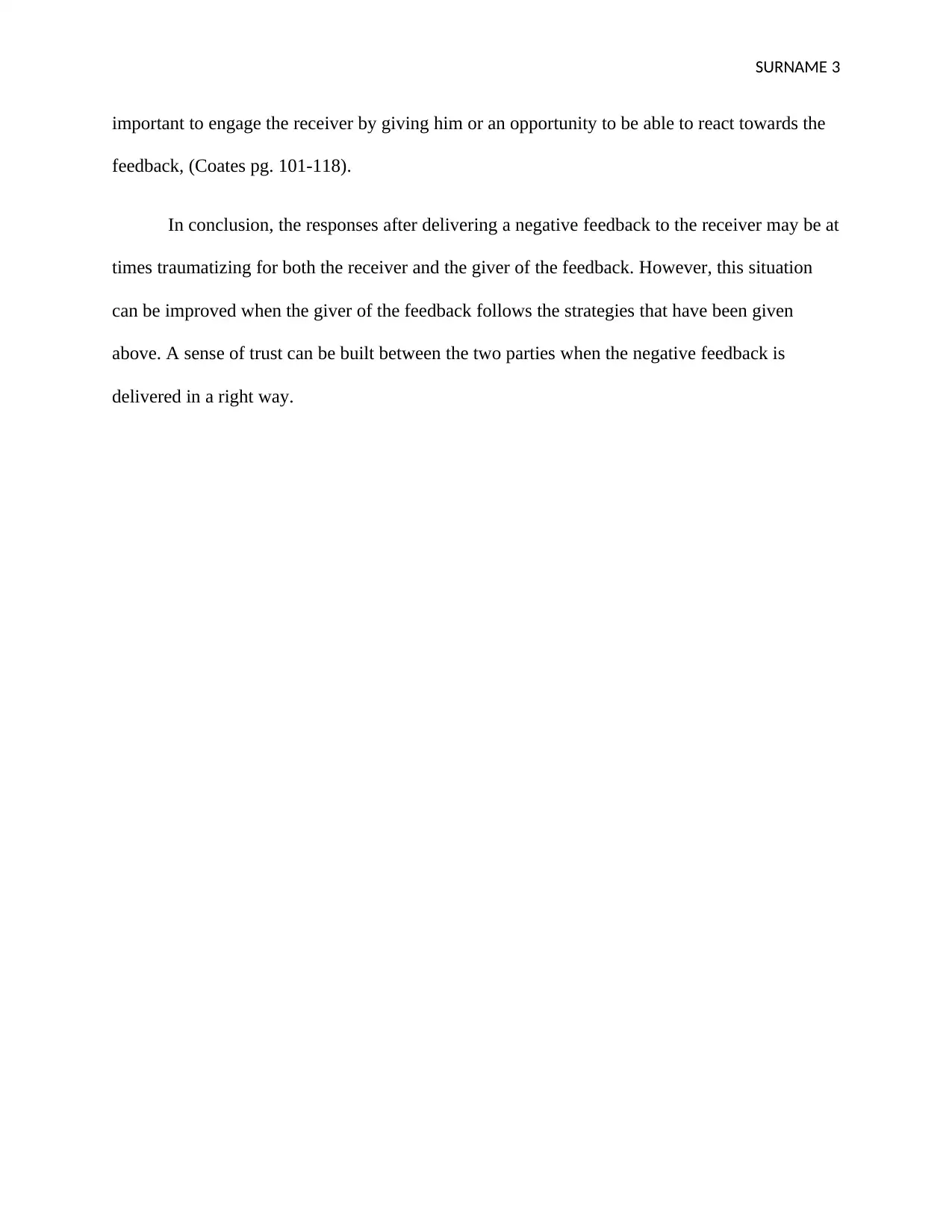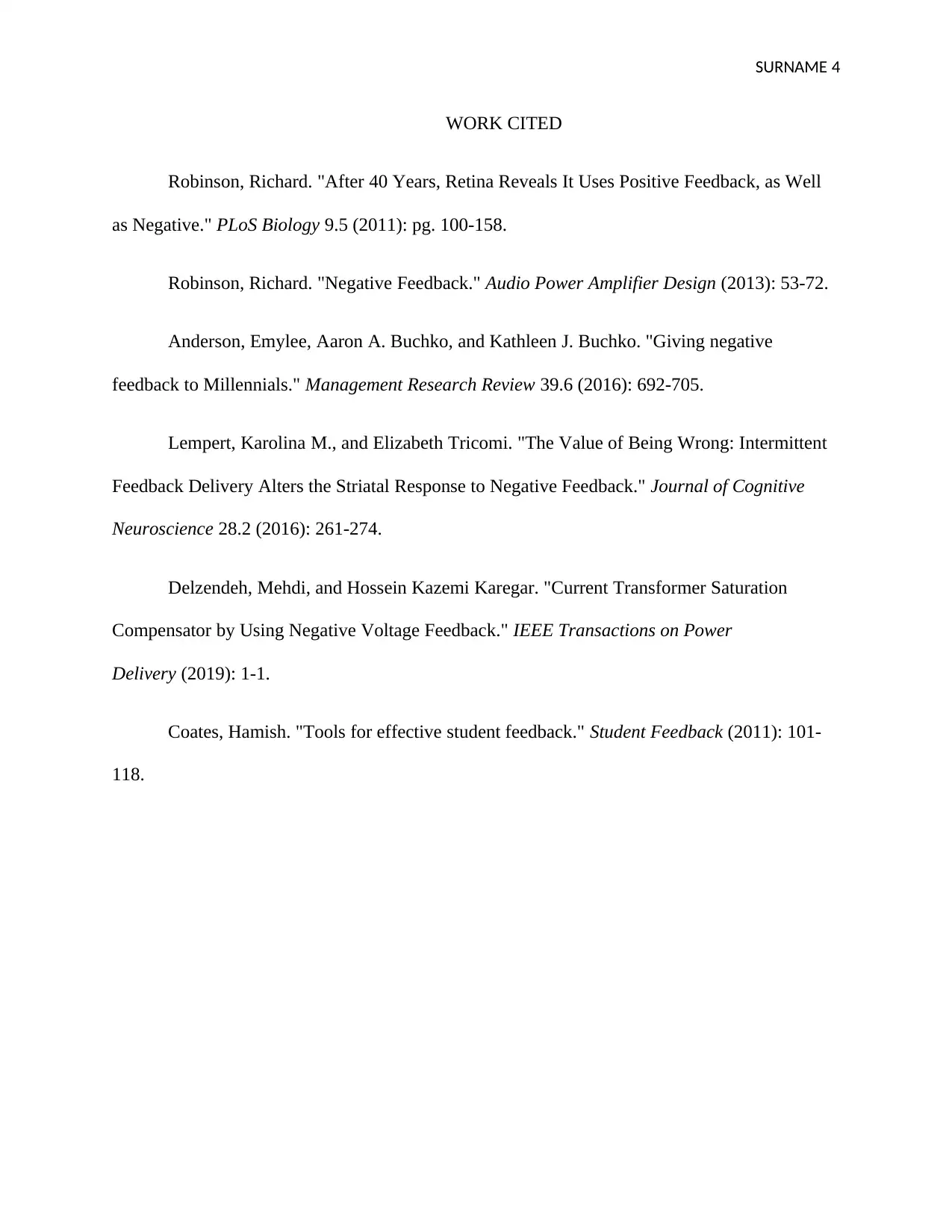Strategies for Delivering Negative Feedback in Leadership Management
VerifiedAdded on 2022/09/26
|4
|841
|24
Essay
AI Summary
This essay examines strategies for effectively delivering and receiving negative feedback in a professional setting. It outlines six key approaches: understanding the recipient, delivering feedback individually, being honest and transparent, identifying the source of the problem, accepting feedback, and paying attention to the receiver's response. The essay emphasizes the importance of building trust and fostering open communication to mitigate the potentially negative impact of feedback. It highlights the significance of empathy, directness, and a supportive approach to ensure that negative feedback is constructive and leads to improved performance. The essay also acknowledges the challenges of delivering negative feedback and suggests ways to make the process more comfortable for both the giver and receiver.
1 out of 4











![[object Object]](/_next/static/media/star-bottom.7253800d.svg)